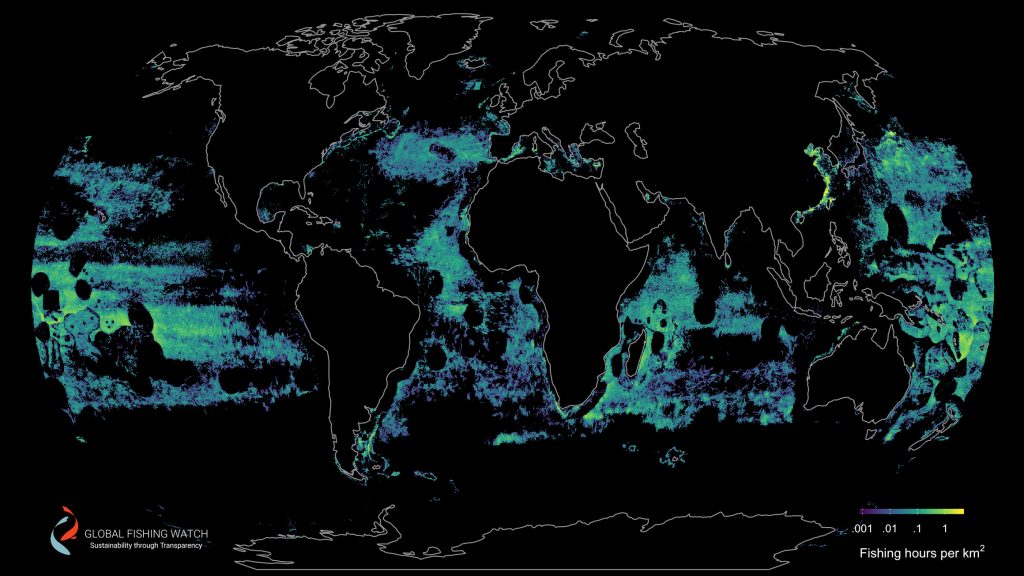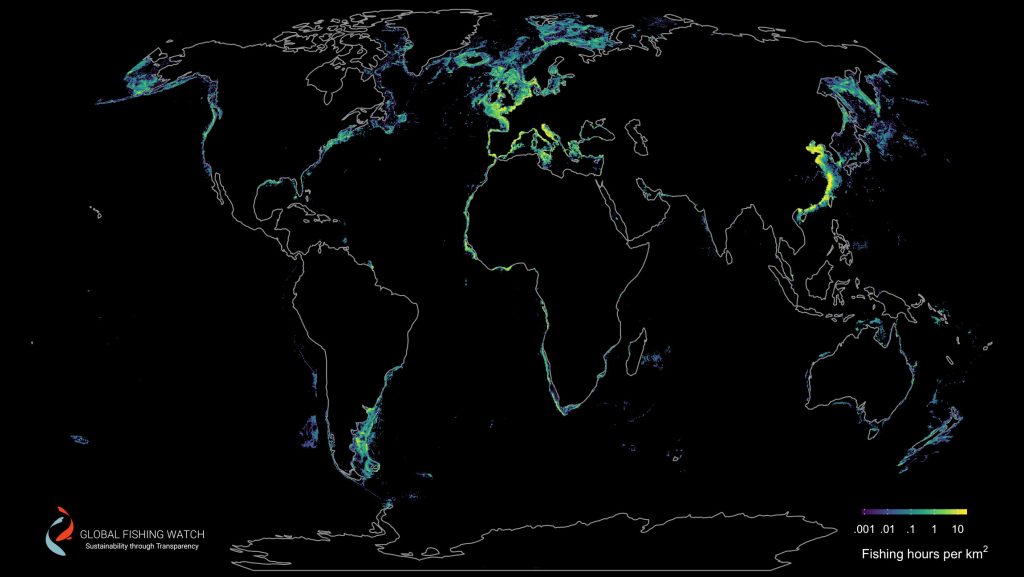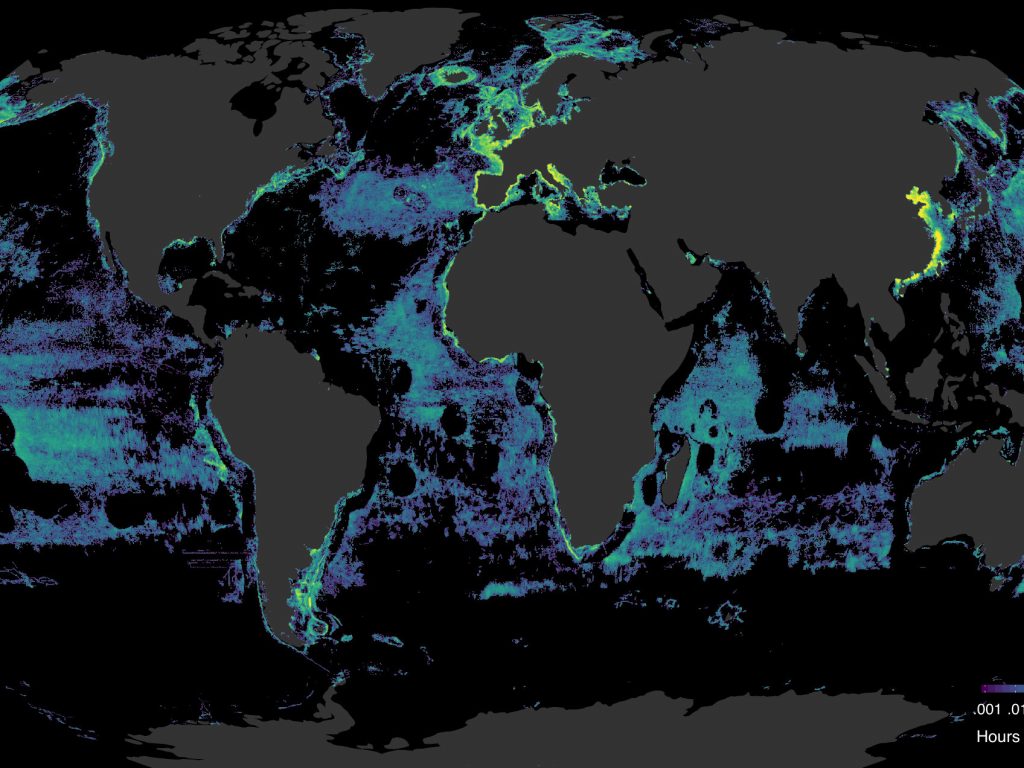News
New Maps Reveal Global Fishing’s ‘Vast Scope Of Exploitation Of The Ocean’
By: Dan Charles | NPR
Posted on:
The fishing industry has long been hard to monitor. Its global footprint is difficult even to visualize. Much fishing takes place unobserved, far from land, and once the boats move on, they leave behind few visible traces of their activity.
But this week, the journal Science published some remarkable maps that help fill that gap. John Amos, president of an organization called SkyTruth, which helped produce them, issued a statement calling the maps “a stunning illustration of the vast scope of exploitation of the ocean.”


The researchers also were able to distinguish between fishing vessels from different countries. According to the study, five countries — China, Spain, Taiwan, Japan, and South Korea — accounted for 85 percent of all high-seas fishing.

9(MDI4ODU1ODA1MDE0ODA3MTMyMDY2MTJiNQ000))

